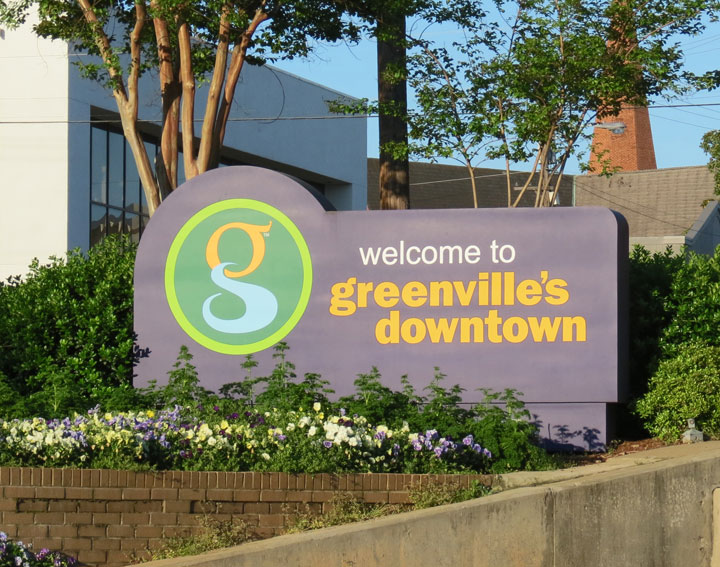
Clinton Clemson Columbia Covered Bridges Cowpens Gaffney Greenville Greer Strom Thurmond Walhalla
Greenville
BMW Bob Jones University Upcountry Museum

Greenville
Greenville is in the foothills of the Appalachian Mountains and includes many small hills. Sassafras Mountain, the highest point in South Carolina, is in northern Pickens County, which adjoins Greenville County to the west. Many area television and radio station towers are on Paris Mountain, the second most prominent peak in the area, less than 7 miles (11 km) from downtown Greenville. According to the United States Census Bureau, Greenville has a total area of 26.1 square miles (68 km2). 26.1 square miles (68 km2) of it is land and 0.1 square miles (0.26 km2) of it is water.

Greenville City Hall
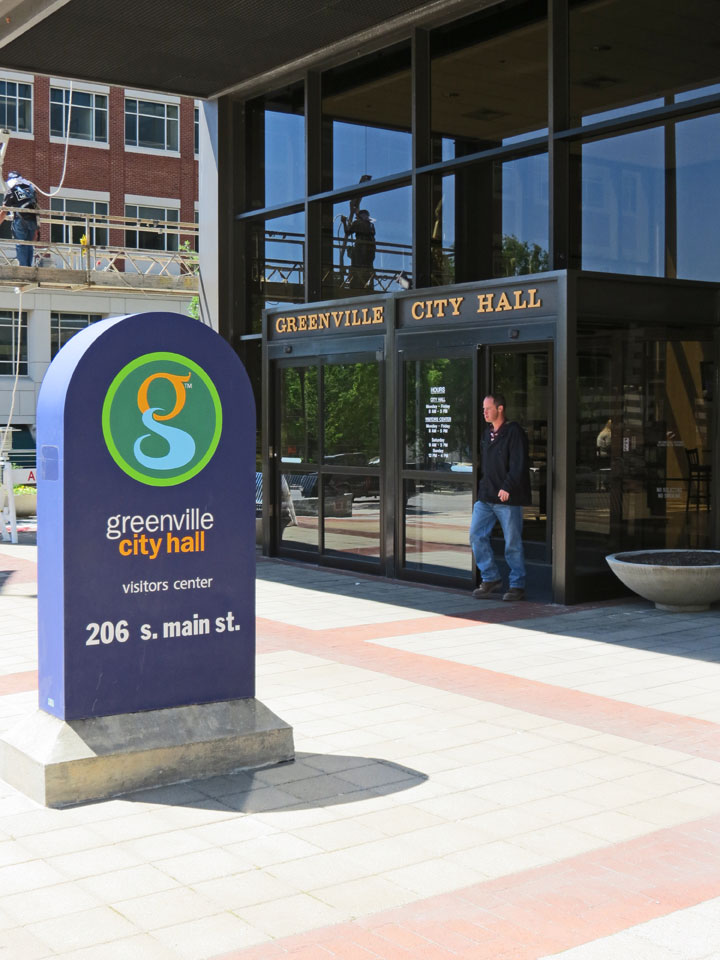
The area was part of the Cherokee Nation's protected grounds after the Treaty of 1763, which ended the French and Indian War. No White man was allowed to enter, though some families already had settled just within the boundary, and White traders regularly crossed the area. The first White man to settle permanently in the area was Richard Pearis; he married a Cherokee and was given several tracts of land by the tribe. The City of Greenville and Paris Mountain (named after Pearis), are on part of that land. During the American Revolution, the Cherokee (and Pearis) sided with the British. After a campaign in 1776, the Cherokee agreed to the Treaty of DeWitt's Corner, ceding territory that includes present-day Greenville County to South Carolina.

Vardry McBee
Greenville was originally called Pleasantburg before an 1831 name change. Greenville County was created in 1786 from Spartanburg District (now Spartanburg County), but was called Greenville District from 1800 until 1868. Greenville may have been named for American Revolutionary General Nathanael Greene, or perhaps for an early resident, Isaac Green. Greenville is the mother district to Pendleton District (now Anderson County), Pickens District (now Pickens County) and Oconee District (now Oconee County).

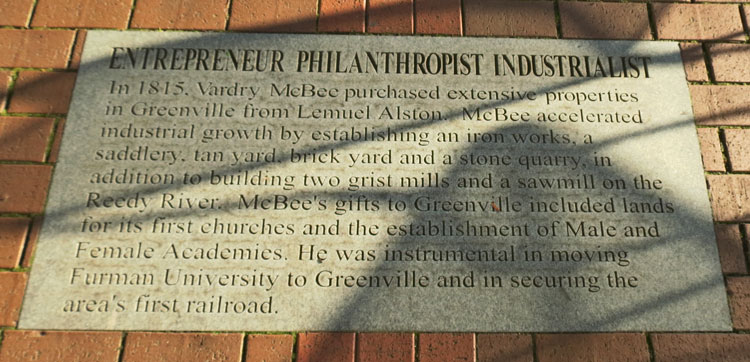
In February, 1869, Greenville's Town Charter was amended by the S. C. General
Assembly establishing Greenville, the town, as a City.
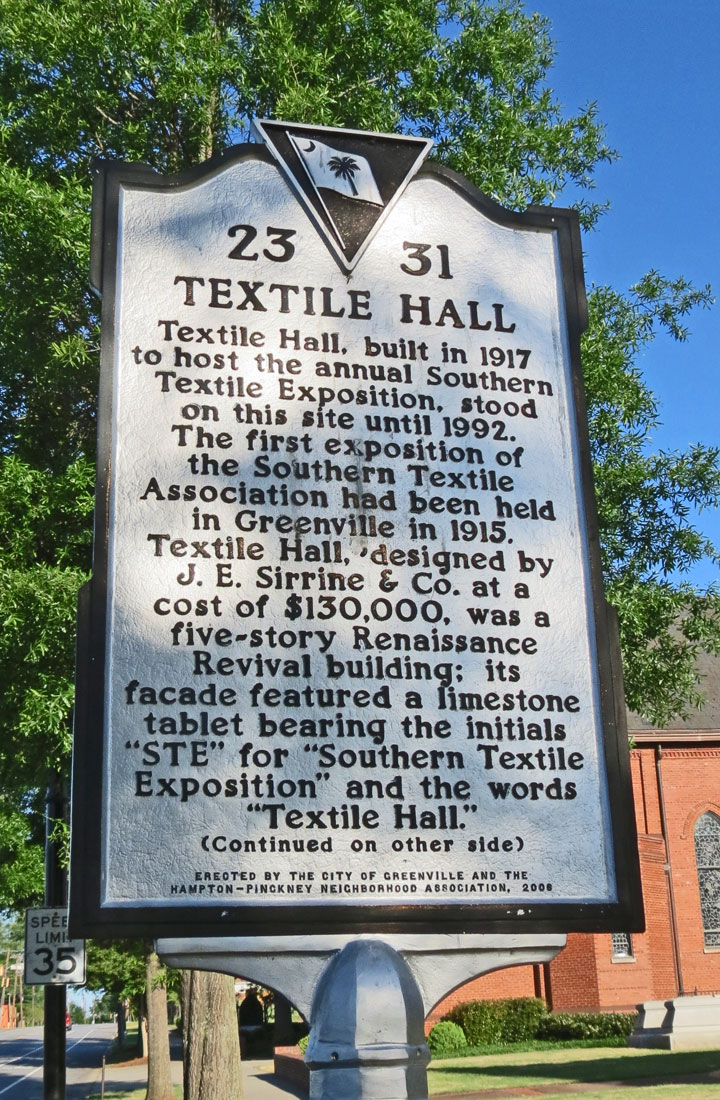
In 1917, when Greenville was known as the "Textile Center of the World," Old
Textile Hall was designed by the J. E. Sirrine Company as the first exposition
facility in the Southeast for textile products and machinery. Textile Hall also
served as a civic auditorium. The building was listed on National Register in
1980 before being demolished in 1992.
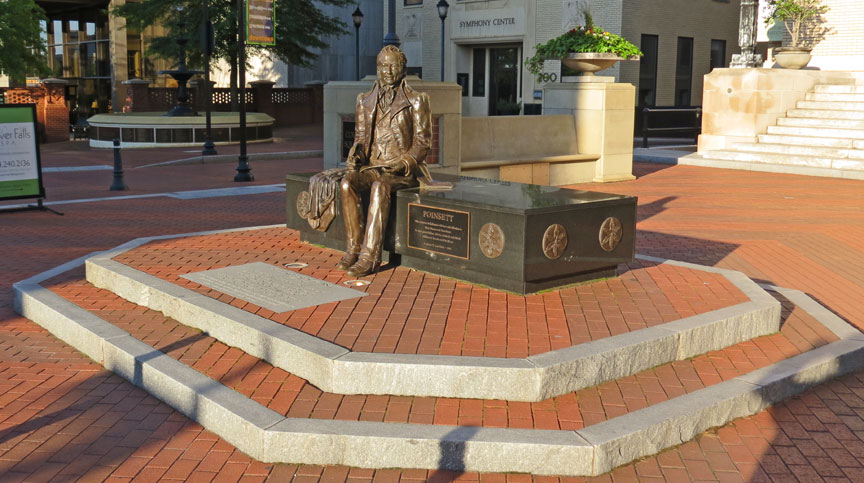
Joel Roberts Poinsett
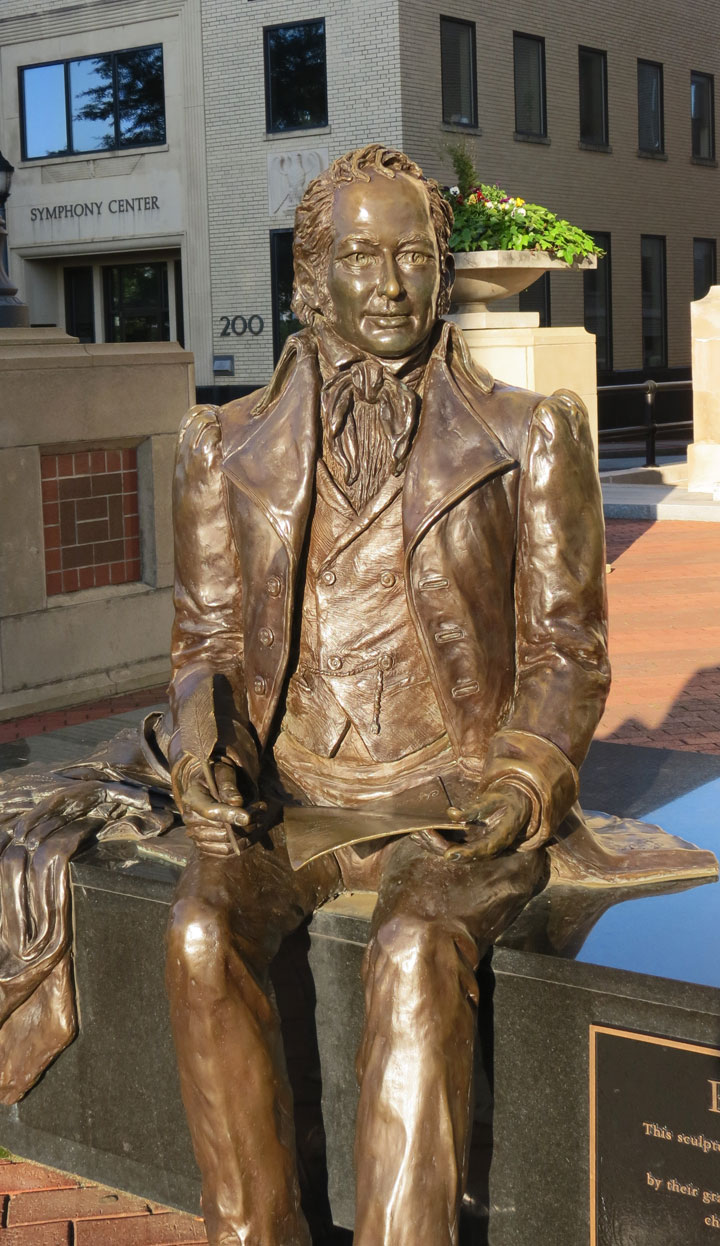
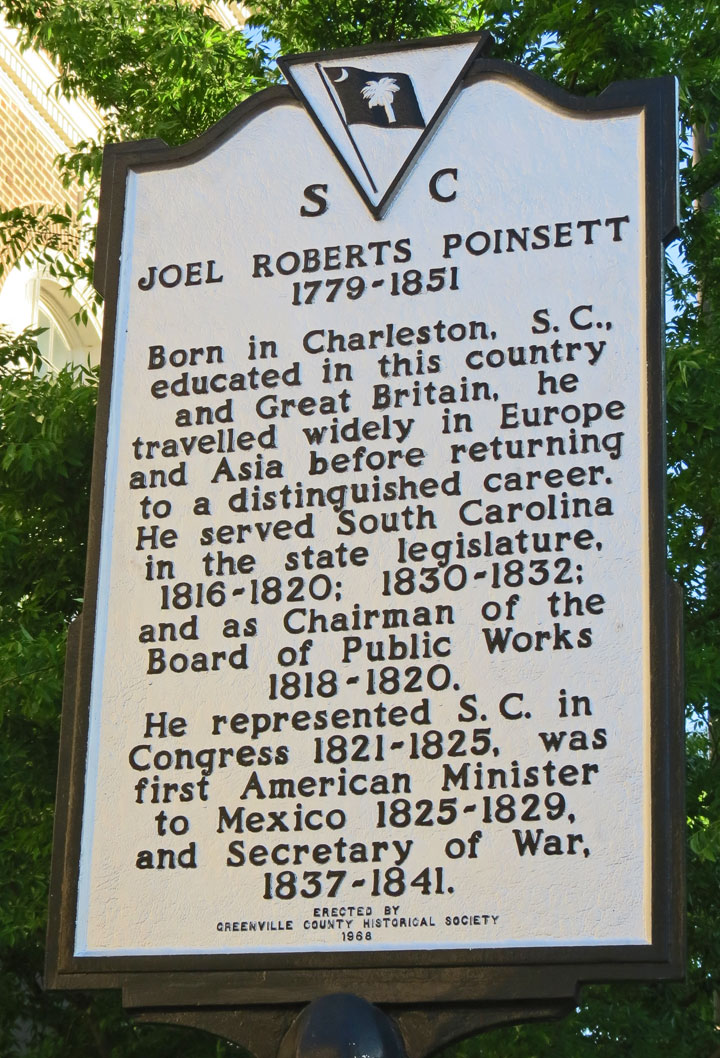
During World War I; Greenville served as a training camp center for Army
recruits. This eventually fostered the development of Donaldson Air Force Base,
built during World War II, which was very important to the economy of the City
of Greenville. Donaldson served as a military base until the early 1960s, when
it was returned to the City of Greenville. The former air base has been
developed into a business park. It contains historic military-style barracks
which are used now by various businesses.
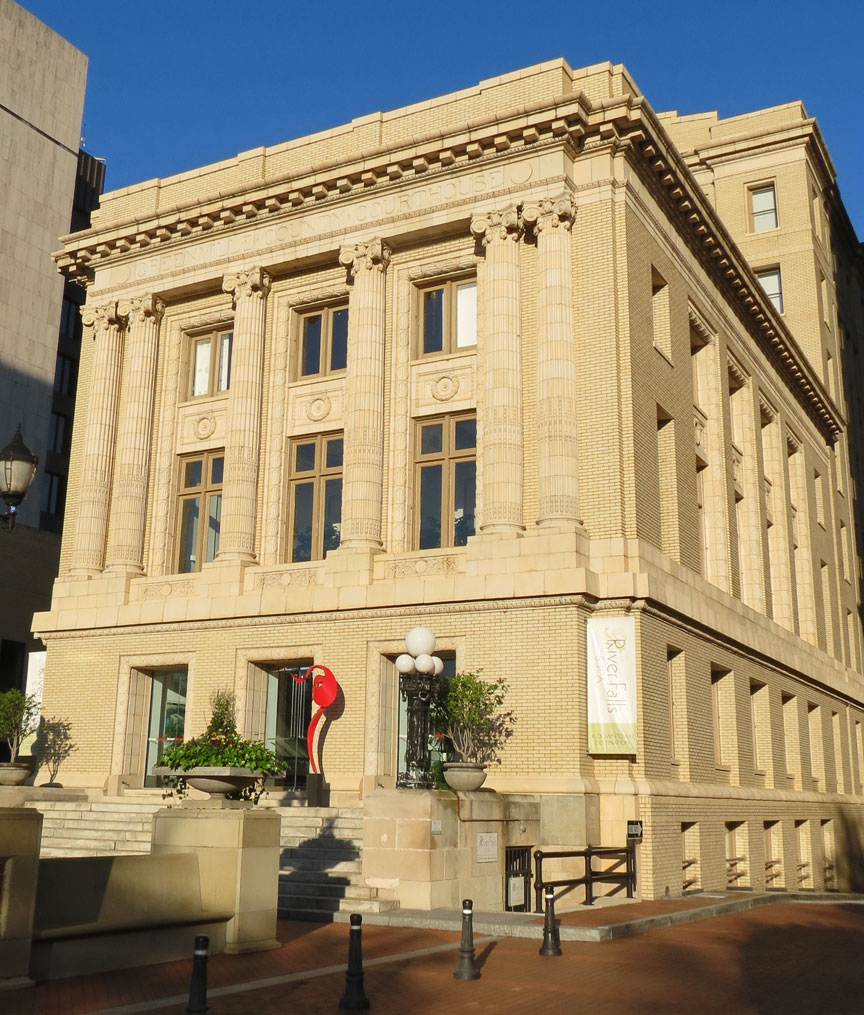
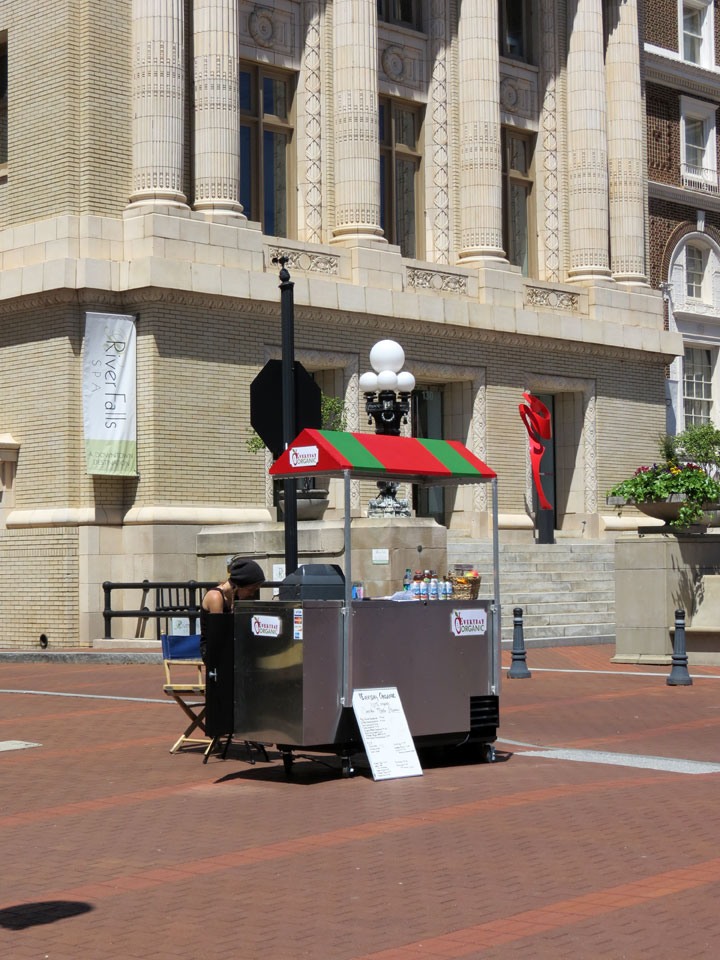
Until the late 1960s, blacks in the area were subject to segregationist
restrictions; for example, they were limited to the back of city buses, were not
permitted to stay in hotels or motels for whites, had to sit in the balcony of
movie theaters, and were not permitted to use the public library, which
partially motivated the activism of Jesse Jackson. Jackson, working through the
NAACP, organized a sit-in at Greenville's F.W. Woolworth "five and dime" store,
and quickly emerged as a civil rights leader. On August 9, 1960, a sit-in at the
S. H. Kress store that eventually led to the U.S. Supreme Court decision
Peterson v. Greenville (1963), which ruled that private citizens must ignore
local segregation ordinances because they violated the equal protection clause
of the Fourteenth Amendment.
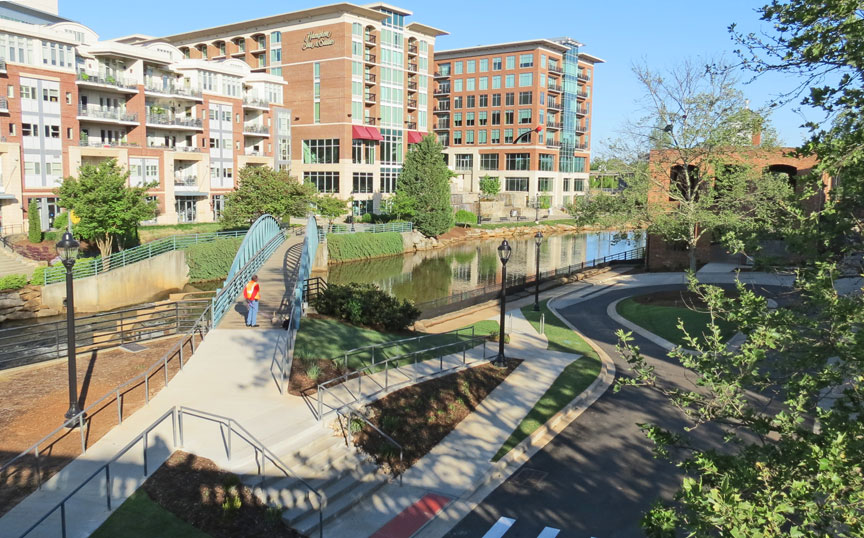
Falls Park on the Reedy
Falls Park on the Reedy, a large regional park in the West End with gardens and several waterfalls. Dedicated in 2004, the $15.0 million park is home to the Liberty Bridge, a pedestrian suspension bridge overlooking the Reedy River. The park's development sparked a $75 million public-private development, Riverplace, directly across Main Street. Falls Park is known as the birthplace of Greenville, but in the mid-20th century it was in severe decline, with the water polluted and grounds littered. In 1960, the Camperdown Bridge was built across the Falls, obstructing public view. In the mid-1980s, the City adopted a master plan for the park, leading to the removal of the Camperdown Bridge and making way for extensive renovations, to include 20 acres (81,000 m2) of gardens and the Liberty Bridge. While bridges with similar structural concepts have been built in Europe, the Liberty Bridge is unique in its geometry.
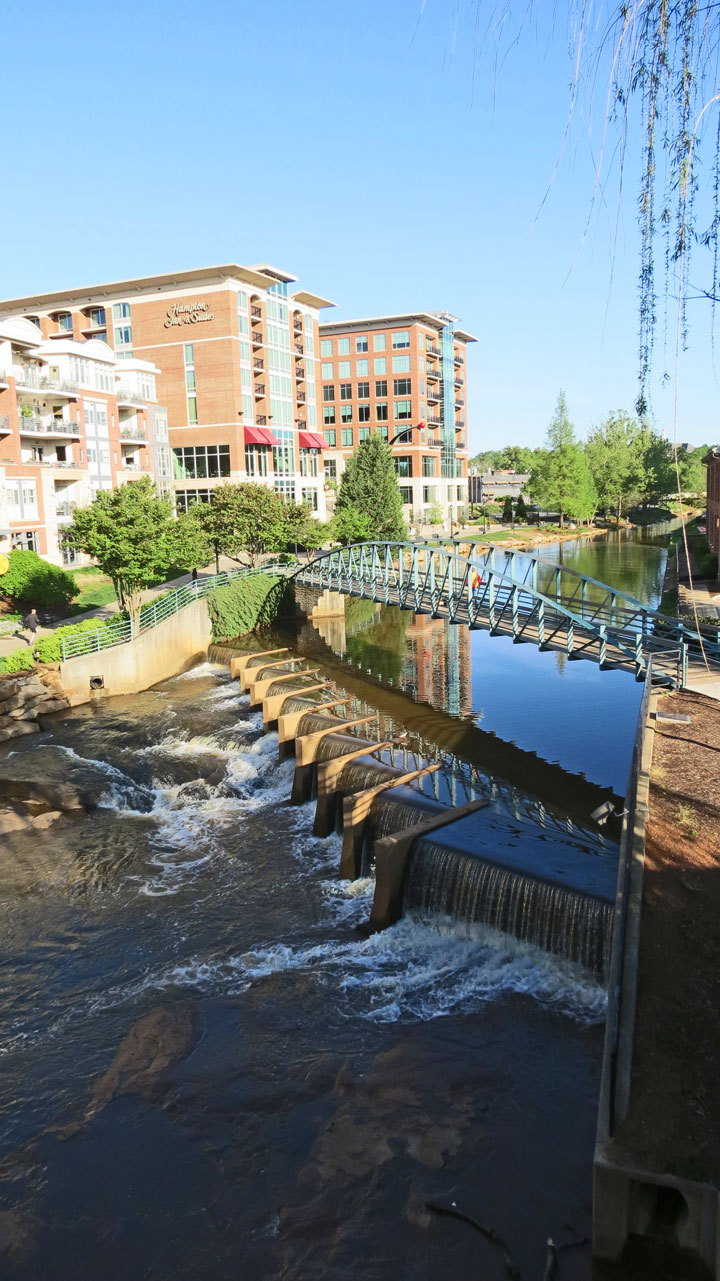
Greenville County Museum of Art specializing in American art, frequently with a Southern perspective that dates back to the 18th century. It is noted for its collections of work by Andrew Wyeth and Jasper Johns, as well as a contemporary collection that features such notables as Andy Warhol, Georgia O'Keeffe, and others.
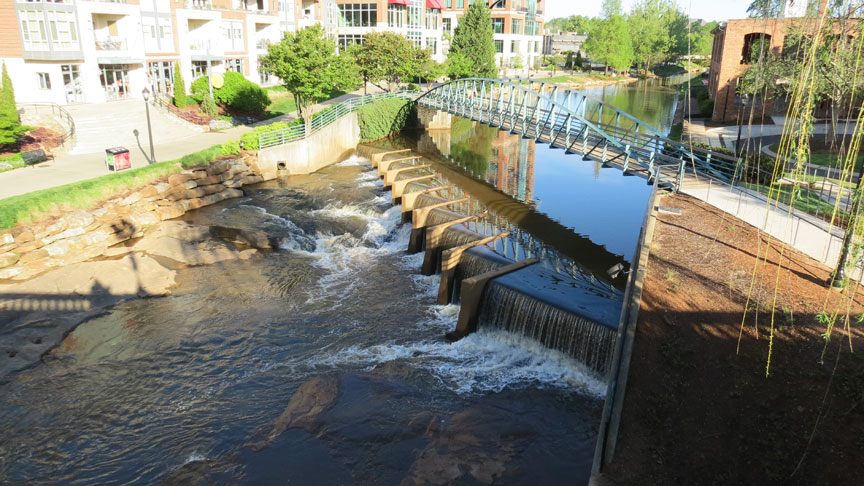
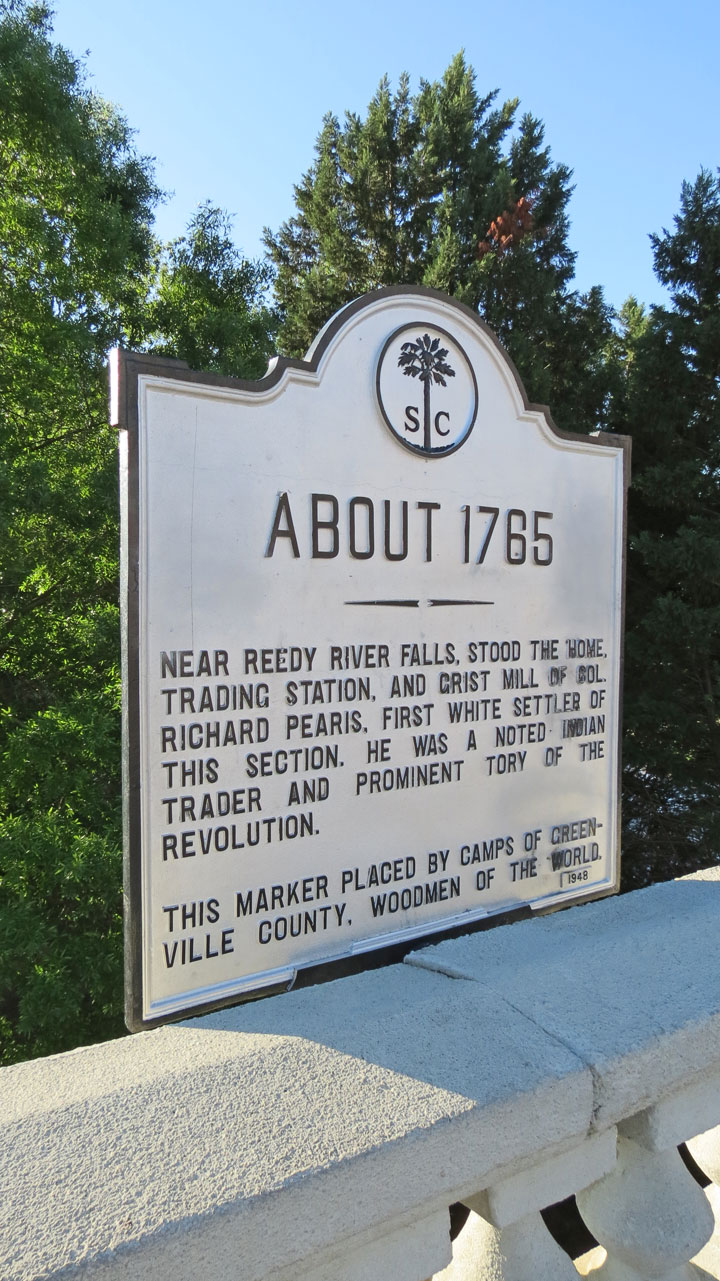
Bob Jones University Museum and Gallery, the second largest collection of
religious Christian art in the world, is located on the campus of
Bob Jones
University. The University also sponsors the Museum and Gallery at Heritage
Green, a smaller, centrally located satellite of the larger museum.

Greenville County Courthouse
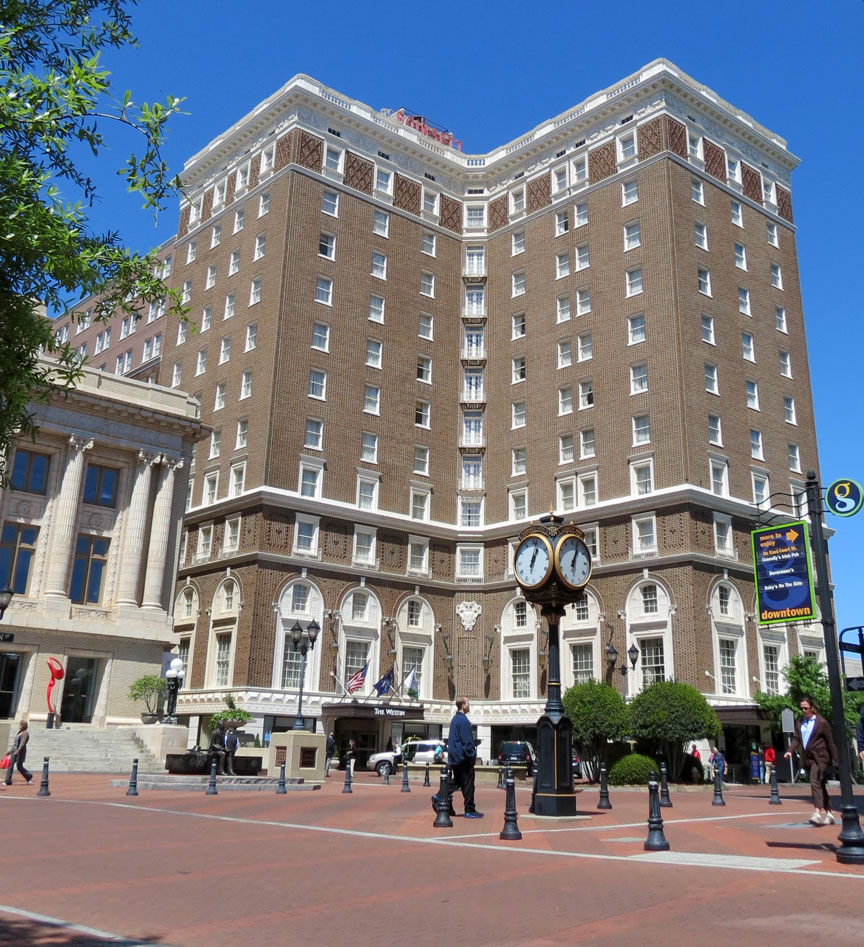
Westen Hotel
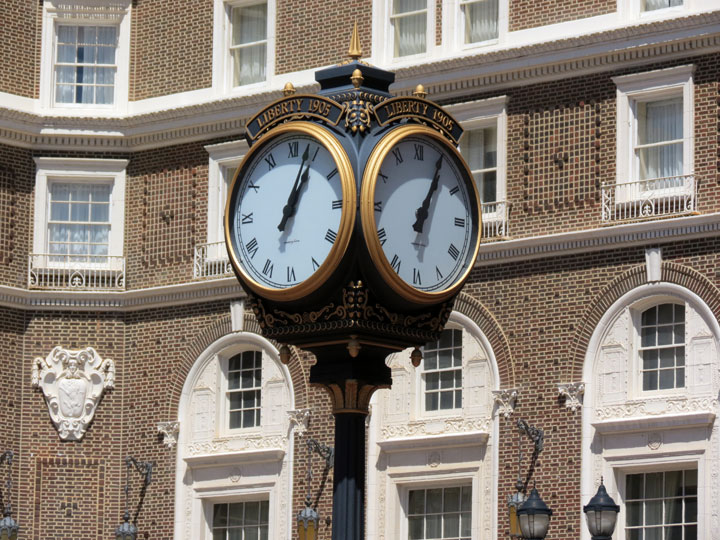
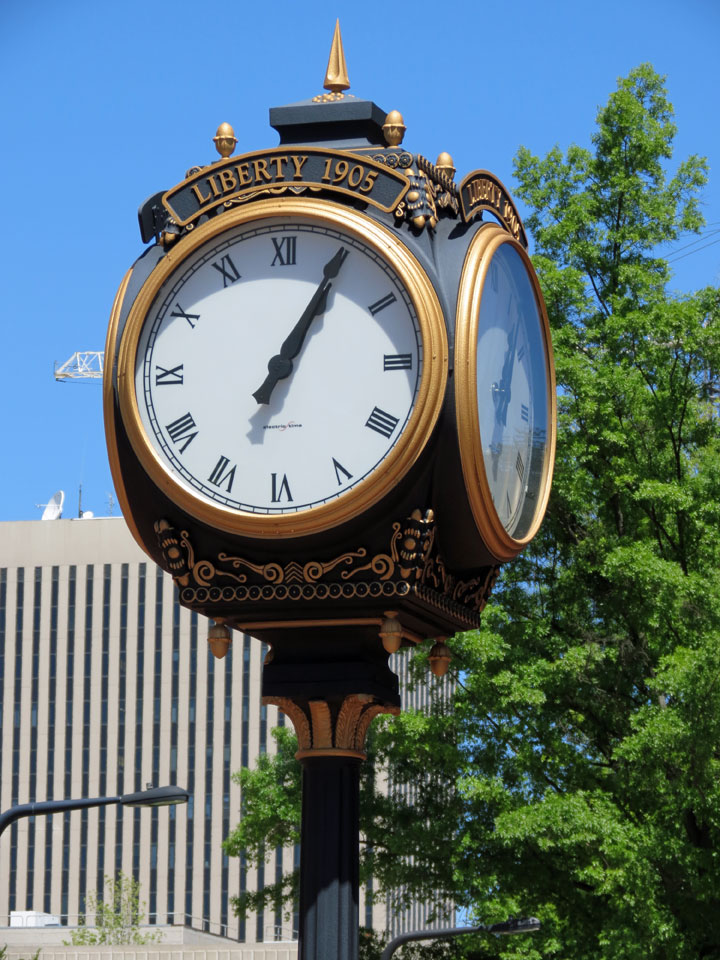
Roper Mountain Science Center is home to a historic 23" refactor telescope, eighth largest of its kind in the United States.
Text from Wikipedia

Poinsett's Spring
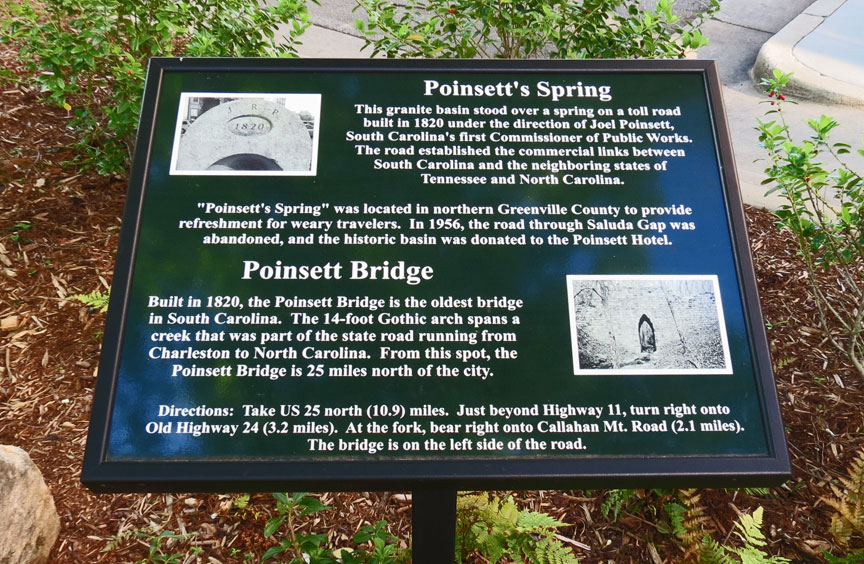
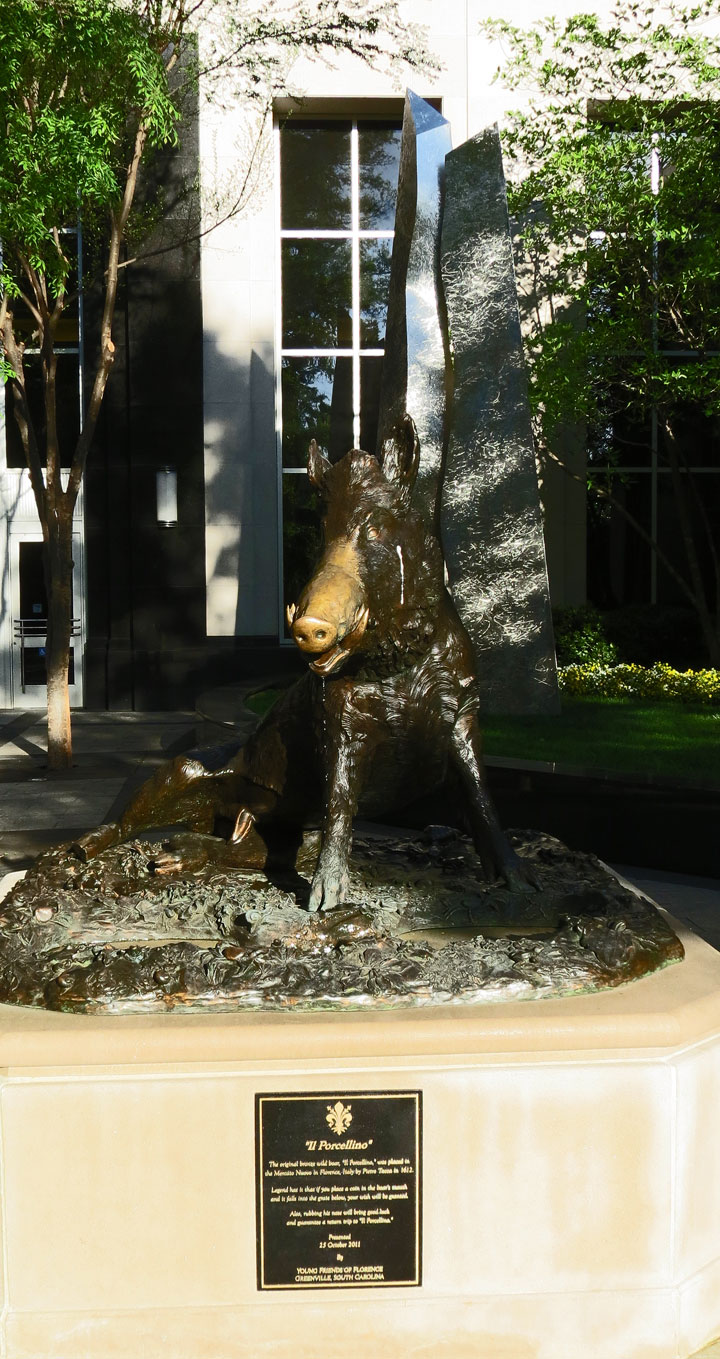
Il Porcellino
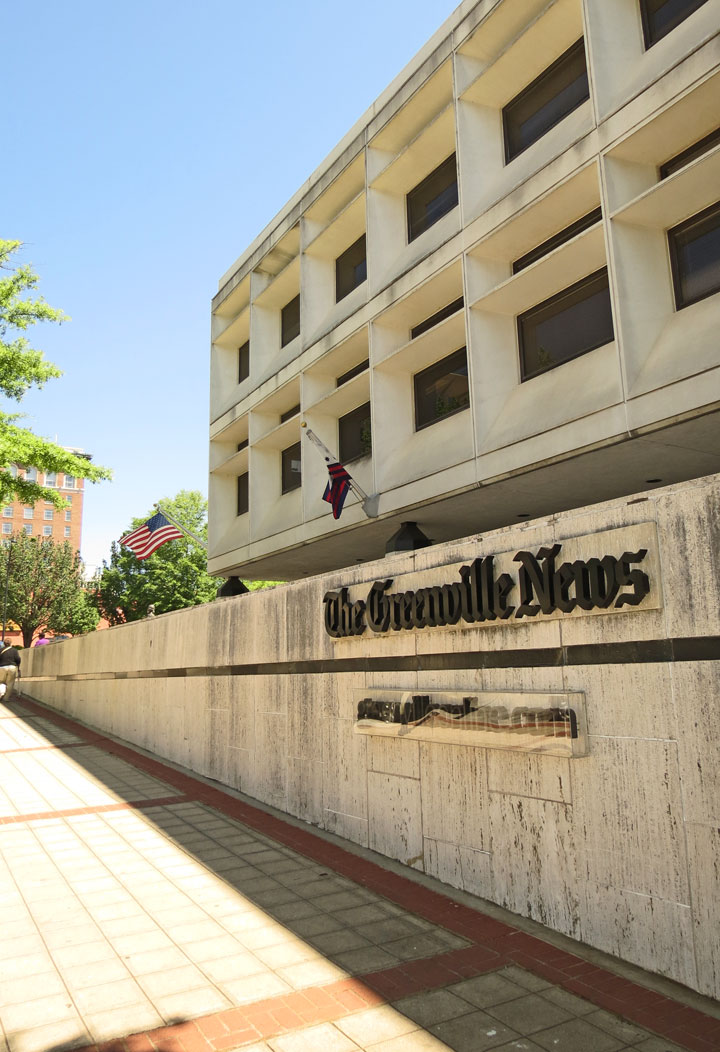
The Greenville News

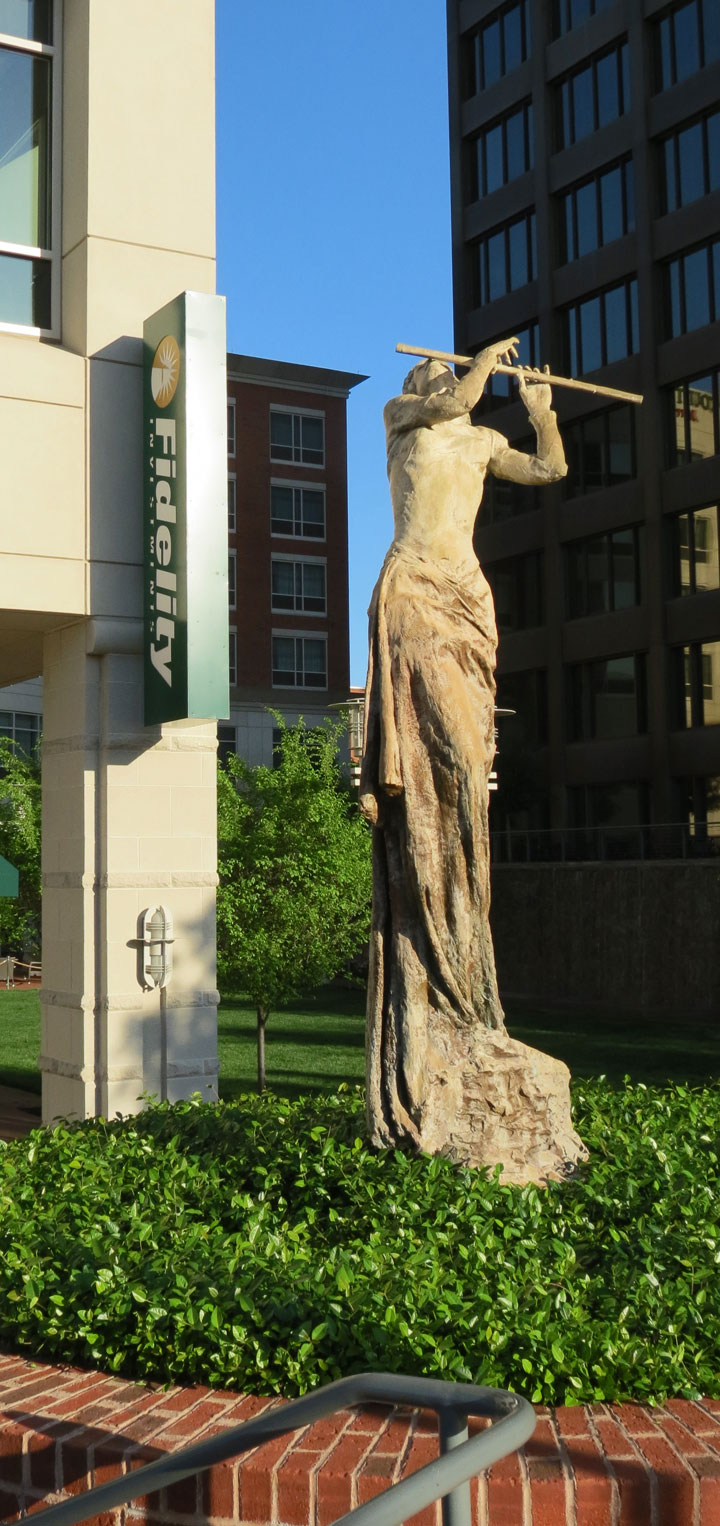

theater
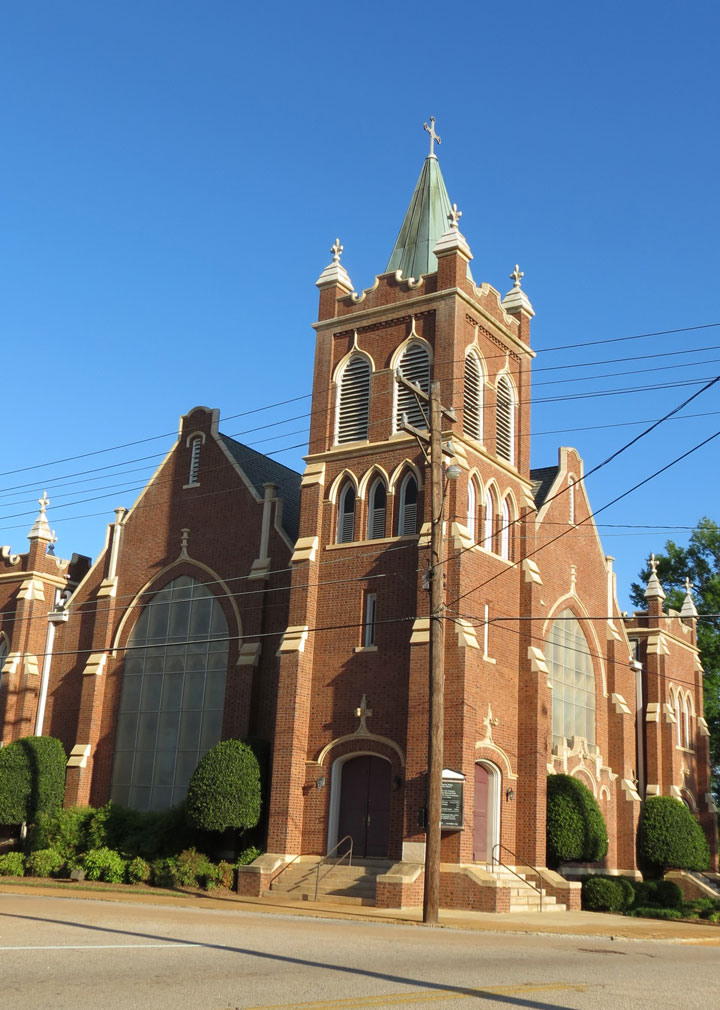
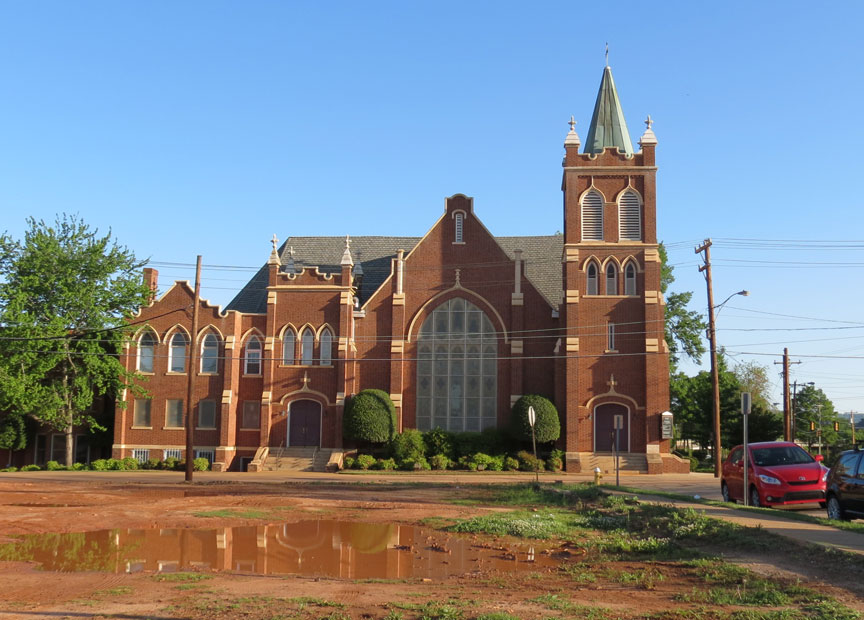
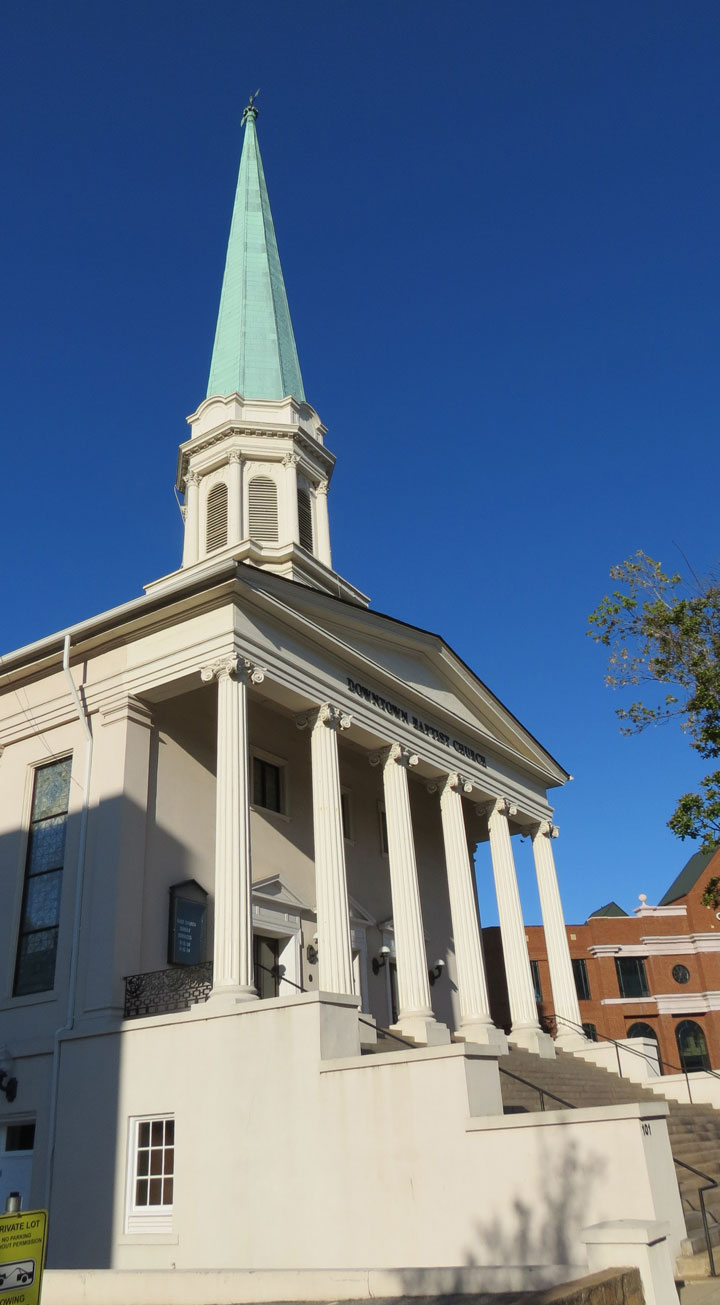
Baptist Church
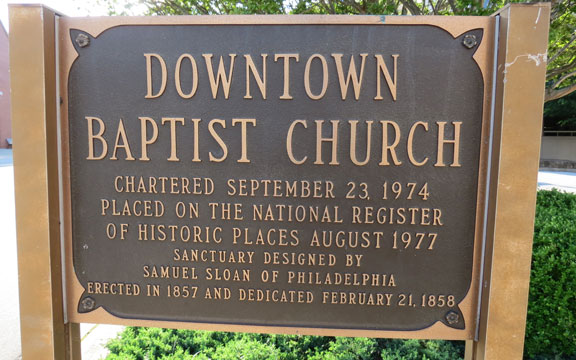
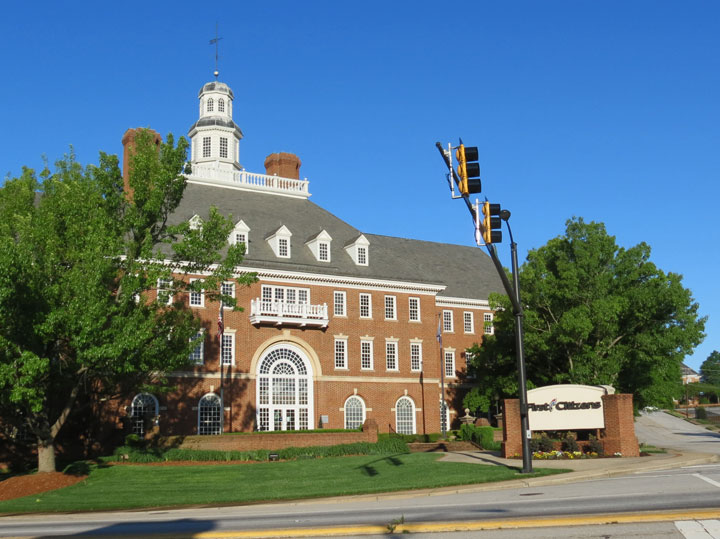

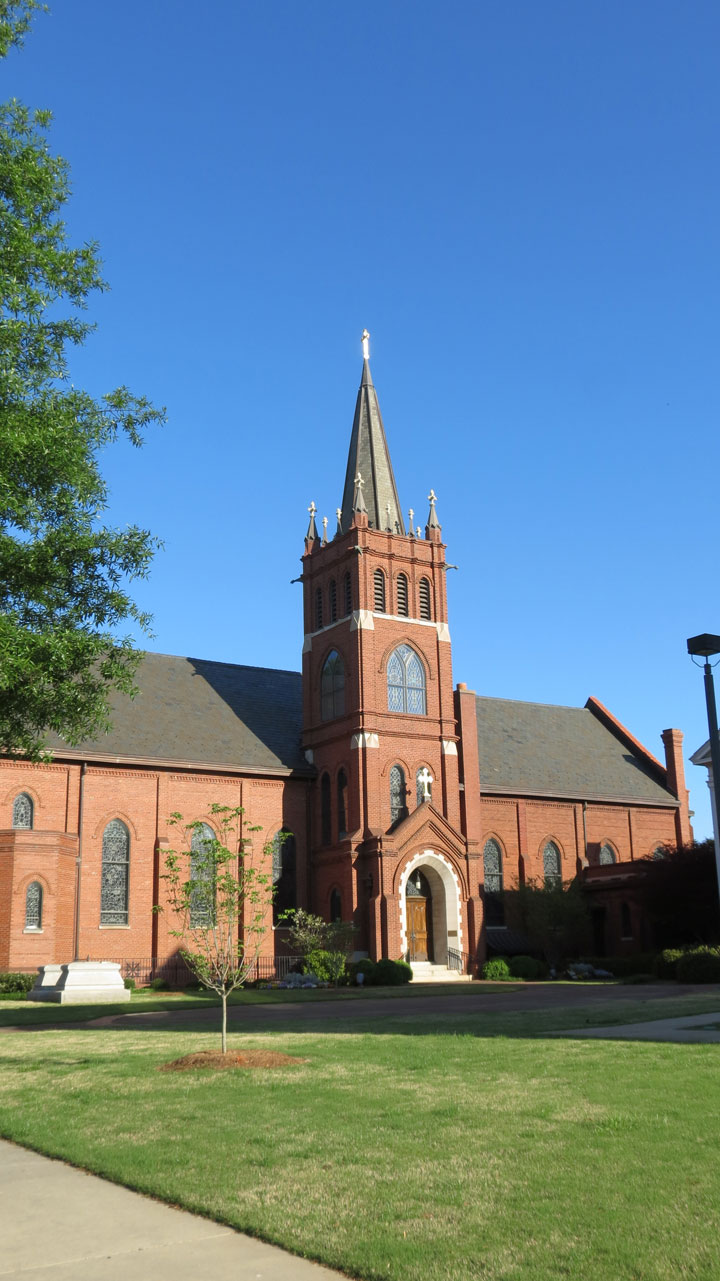
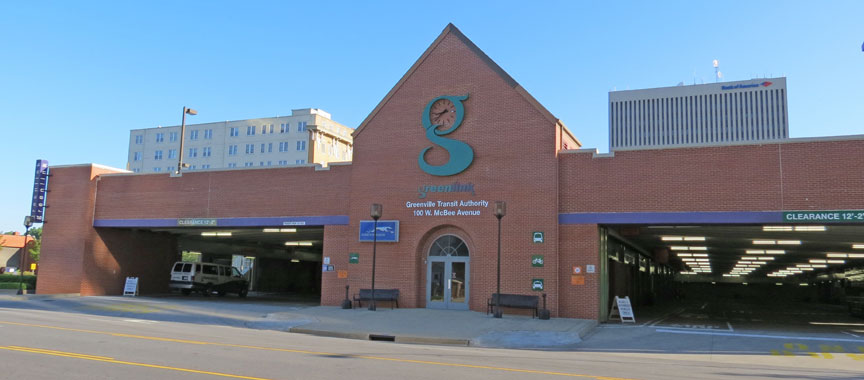
transit garage
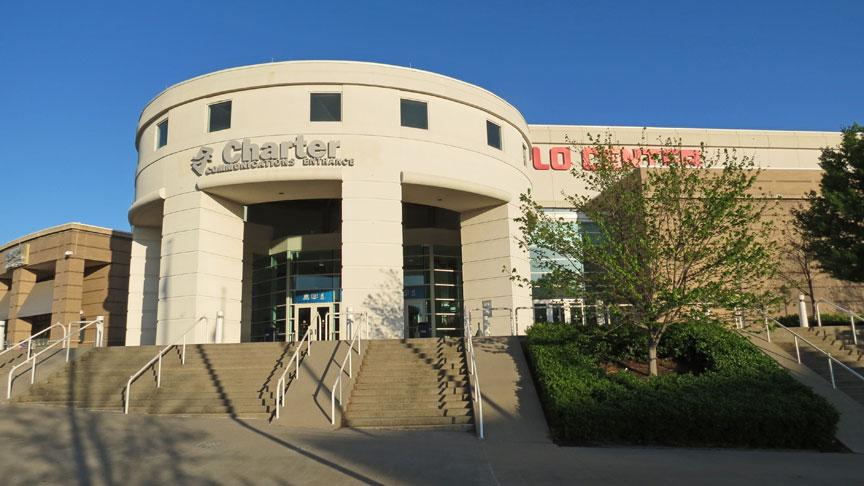
arena

home of Road Warriors hockey
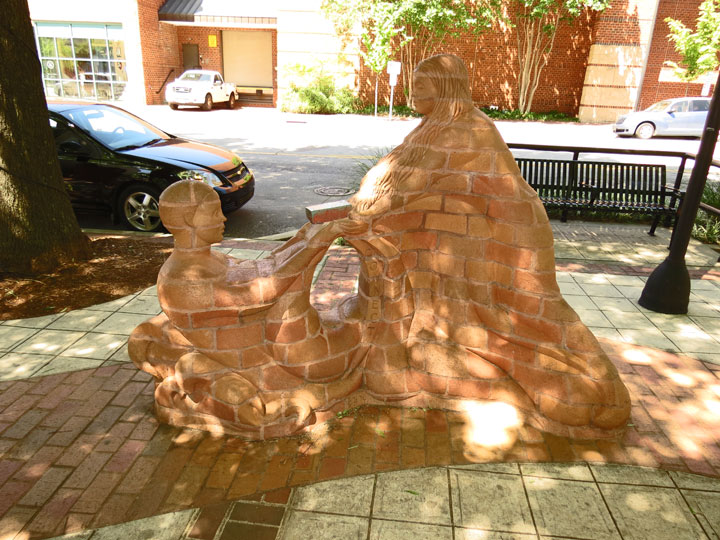
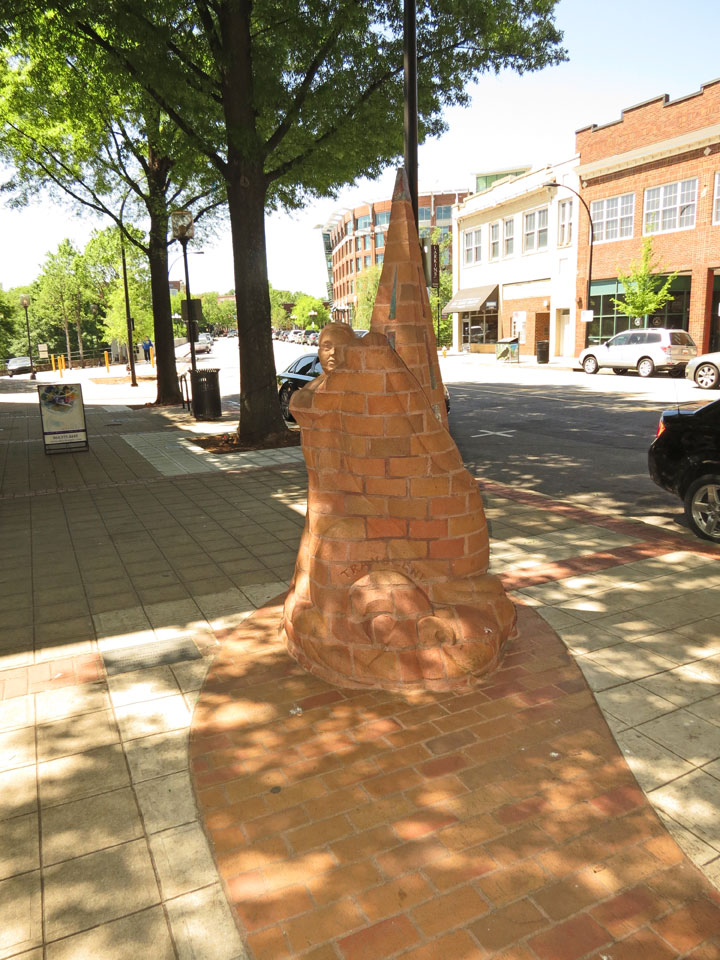
sidewalk art
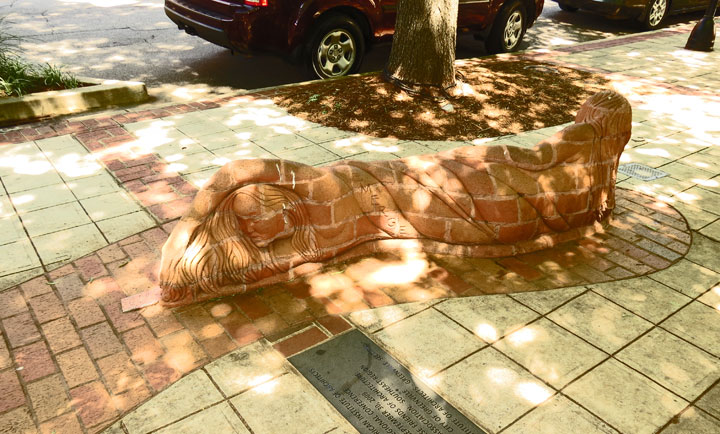
BMW Bob Jones University Upcountry Museum
Clinton Clemson Columbia Covered Bridges Cowpens Gaffney Greenville Greer Strom Thurmond Walhalla